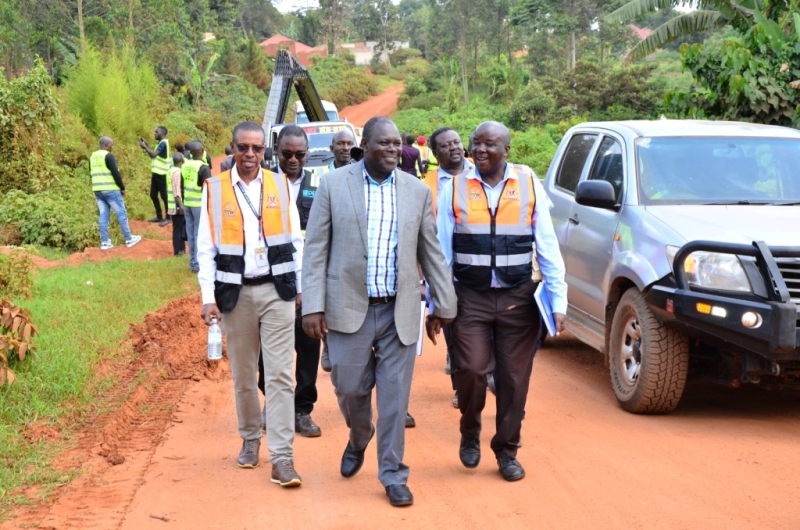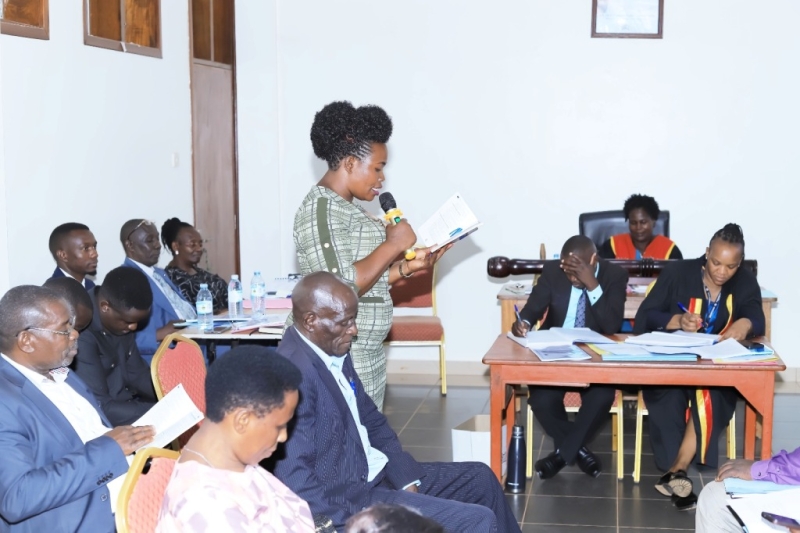Construction of the much-anticipated Ntenjeru–Bule Road has stalled barely a month after its official launch, following a cultural dispute over a sacred tree in Mpata Village, Mukono District.
On the 2nd of last month, the Minister for Kampala and Metropolitan Affairs, Hajjat Minsa Kabanda, flagged off the works for the 18-month project, which forms part of the 18.5-kilometre Ntenjeru–Bule stretch under the Greater Kampala Metropolitan Area Urban Development Program, funded by the World Bank.
The contract for the current 7.8-kilometre section was awarded to China Railway Number 5 Engineering Group Company Limited at a cost of Shs 35.7 billion. Construction had been progressing smoothly until residents raised concerns that the road would cut through a highly revered cultural site.
At the heart of the deadlock is Namuzikiza, a sacred tree belonging to the Lugave (Pangolin) clan, recognised as an ancestral site. Clan leaders say the tree cannot be removed or disturbed unless elaborate rituals are performed—rituals that require substantial funding.

They are demanding Shs 650 million in compensation before any relocation of the tree and other cultural sites can take place.
According to Masiko Mulo, the caretaker of the Lugave clan heritage site, the road will also affect three sacred wells, Nakagga, Namagulu, and Mpakanya, each believed to host ancestral goddesses. The clan insists that specific ceremonies must be performed at each of the wells before construction machinery can pass through.
However, district authorities have informed the petitioners that World Bank guidelines do not provide for compensation to individuals, further complicating the matter.
The claims by traditional healers have been sharply contested by religious leaders who toured the site. They dismissed the compensation demands as wasteful and instead called for “divine intervention,” urging the community to abandon what they termed outdated practices.
During a tour of the project by district leaders, government officials, and supervising engineers from Professional Engineering Consultants, Gesh Consultants, and MDF members, Ms Martha Lynn Rwaboona, representing the contractor, confirmed that the cultural dispute had necessitated the team bypassing certain sections.
She emphasised that the company respects cultural heritage and must therefore handle such issues “with utmost sensitivity.”
Mukono District NRM chairman Hajji Harunah Ssemakula expressed disappointment upon learning that a spirit shrine was standing in the way of public infrastructure. He promised to personally visit the site and begin dialogue with the custodians.
On the other hand, Hajji Sekayivu Ibrahim, representing traders on Mukono District Development Forum, criticised some residents for “holding onto outdated beliefs” and warned that such attitudes could slow down development. He urged leaders to intensify community education.
Male Byekwaso, head of traditional healers in Mukono district, called for cooperation among all parties, advising that the sacred tree could be relocated in a culturally respectful manner without blocking progress.
Mukono District Chief Administrative Officer Henry Ddamba assured residents that the contractor remains on schedule despite the ongoing dispute. He pledged that no group would be sidelined during negotiations and that efforts would be made to preserve the Namuzikiza tree.
He encouraged residents to embrace the project, noting that the new road would significantly improve market access and support business and agricultural growth once completed.
As authorities, clan leaders, and contractors continue their discussions, construction on the disputed section remains on hold. The outcome will likely set a precedent for how cultural sites are handled amid major infrastructure developments in the region.













